What’s It Like to Shoot a Grand Tour?
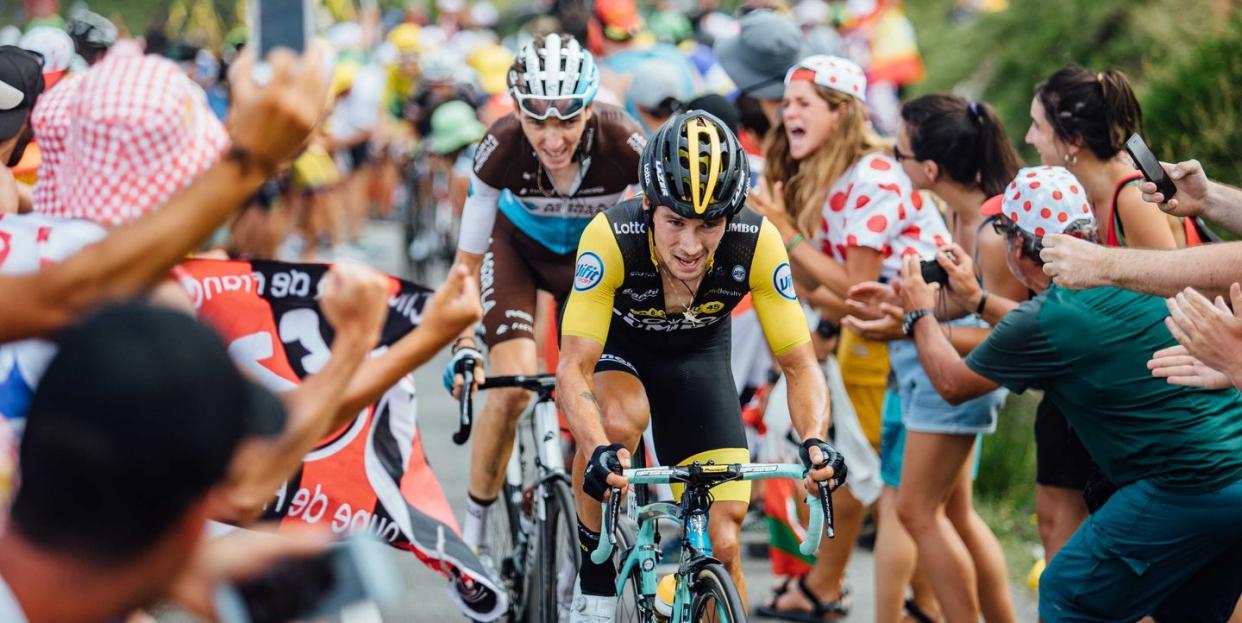
For the second year in a row, Bicycling enlisted the skills and connections of noted cycling photographer Chris Auld to cover the Tour de France. His history with the event makes him the prime candidate to produce not only the extensive shot list we give him—never-before-seen fastest bikes and detailed shots of the custom Tour de France gear—but some of the most memorable moments of each stage.
With the Tour well underway and Auld now with thousands of shots taken, we decided to hit him in the midst of all the action with our most burning questions about how he brings the race to life visually, how he captures various parts of the race through shortcuts, and what he does with the thousands of images he takes for each stage.
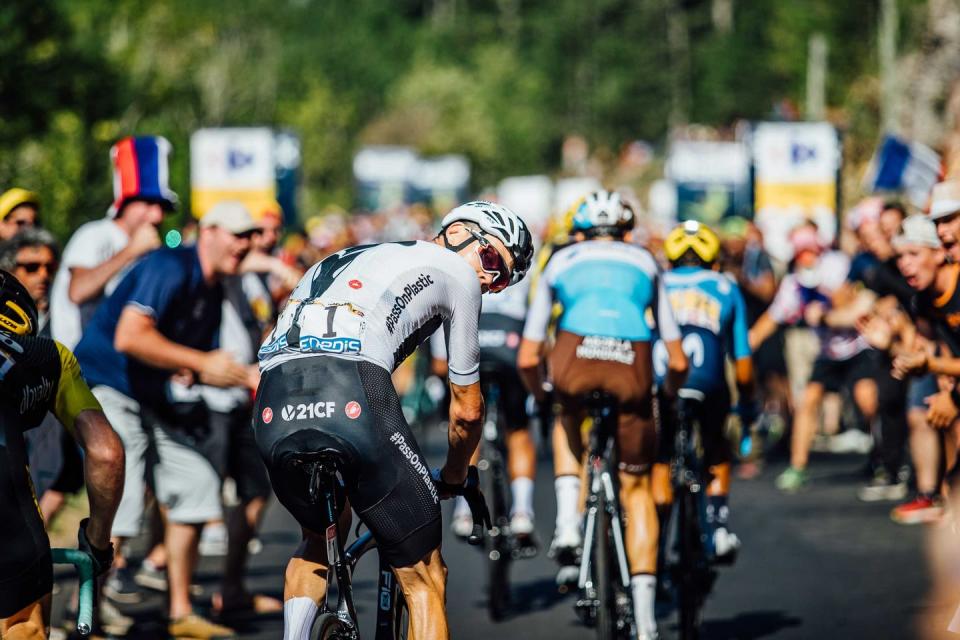
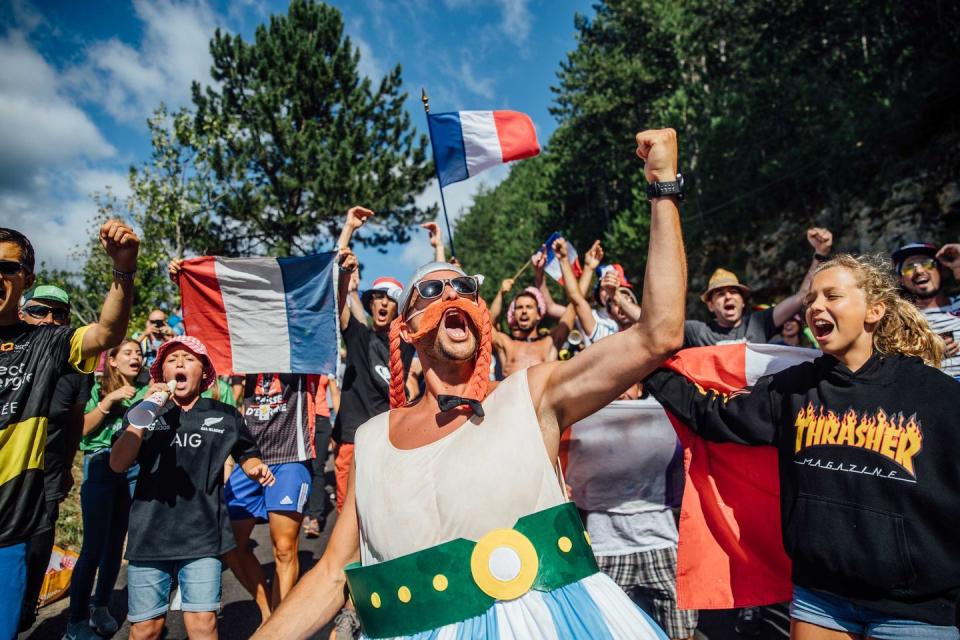
Bicycling: Besides your trusty Canon 1 DX Mark II, what are your top five pieces of gear you have to have while shooting the Tour de France?
Chris Auld: Apart from the obvious stuff like cameras and lenses, I couldn’t function without a laptop, mobile phone, the race road book, which has maps and timings for all stages, a sticker for the car w allows you to drive on the course, and a bib that all the photographers where at the finish. I also need clothing for all occasions, especially rain.
Nerdy photo question alert: What’s your favorite point and shoot camera?
I don’t really keep up to date with point and shoot gear, but Sony leads the way with new technology, leaving Nikon and Canon playing catch up. I shoot manual, unless the lighting is uneven, and then I flick the camera to auto ISO so the aperture and shutter speed stays the same but the camera chooses the ISO.
What came first, photography or cycling?
I worked as a commercial photographer, shooting studio and location. I didn’t consciously choose cycling. I just fell into it. I did have an interest in the sport and ride a bike, so I guess that helped.
Who gave you your first cycling photo assignment?
My first published job was with Cycling Weekly in the U.K., with my background in studio work that set me apart from most other photographers as I had the ability to shoot both features, using studio lighting and action. Most photographers on the Tour don’t have a studio background.
When did you shoot your first World Tour?
My first race on the World Stage was UCI World Road Race Championships in Qatar in 2016. I was working for Pro Cycling. To be honest I got the same access as everyone else, but turning up not knowing anyone or how everything worked was a bit daunting. This is my seventh, so compared to a lot of the guys on the circuit I’m a new boy. Many have clocked up over 30 Tour de France’s alone, not to mention Giro and Vuelta. It takes a while [to get connected]. You need to be at as many races as possible, so you become a regular face, recognized by both your colleagues, riders and team staff. I still have a long way to go.
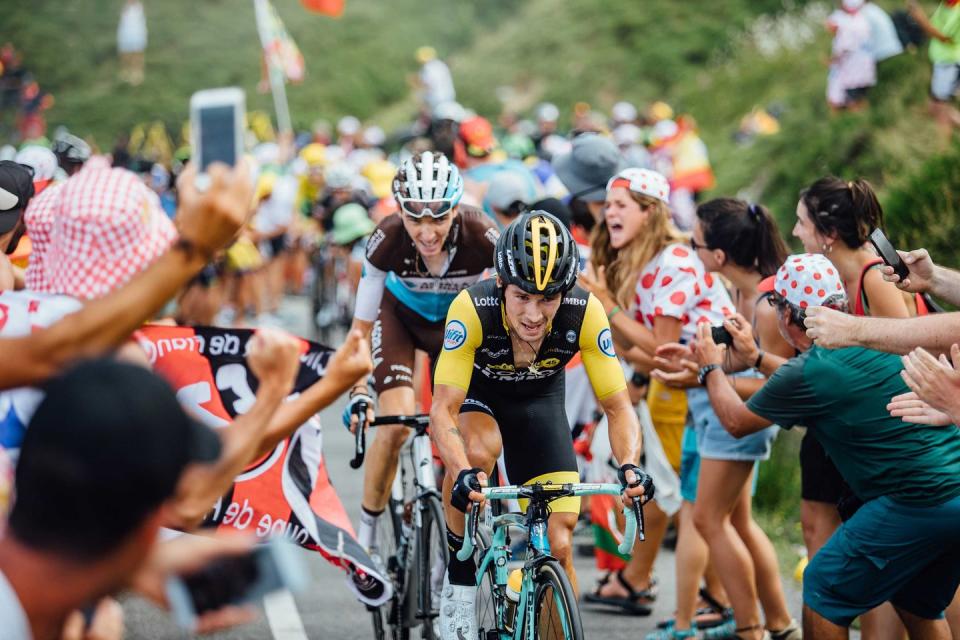
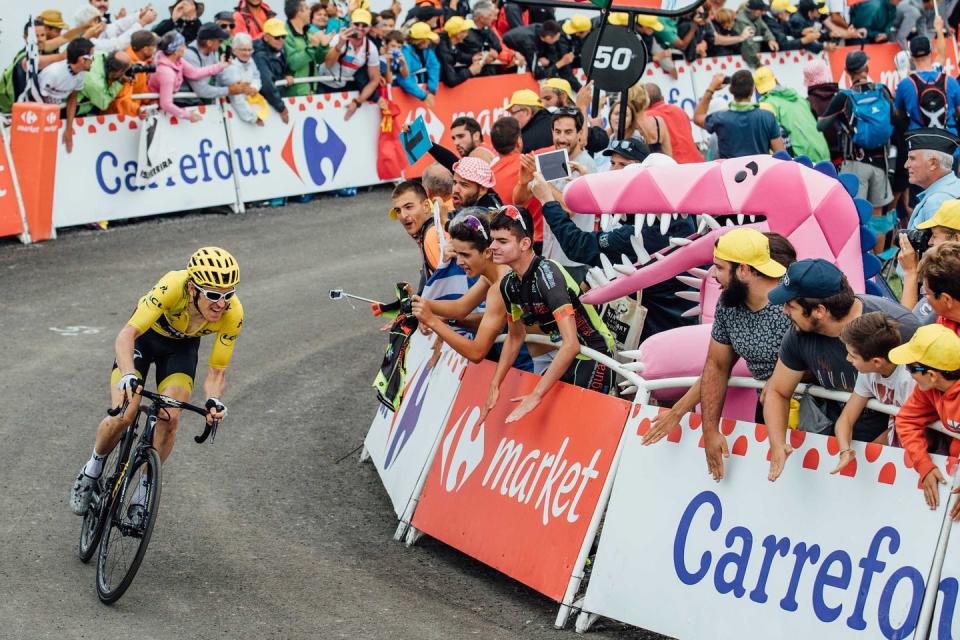
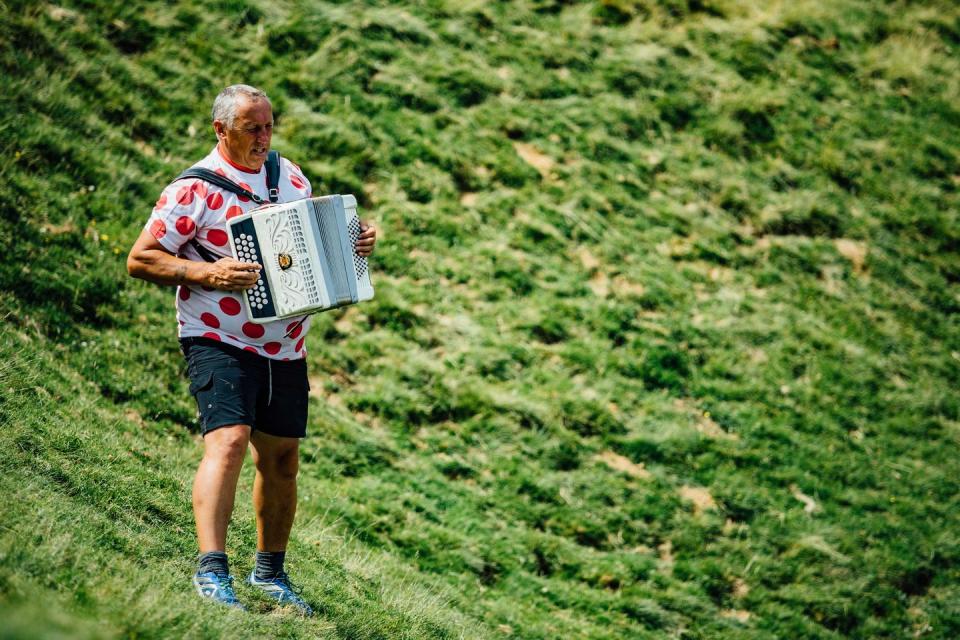
At the time of this interview, the cyclists completed Stage 8. All of the locations are epic, but is there one spot you’re really looking forward to shooting?
I never look more than one stage ahead. It would drive me crazy. But the mountains are always the highlight of any Grand Tour.
How many images to you shoot per day, per World Tour?
An average day will be around 2,000 shots.
That’s a lot—say 42,000 images. How do you keep track?
I get requests from clients for specific shots, but other than that I shoot what I want. Some riders are a lot more profitable to shoot than others. I edit daily after each stage and upload it to a file sharing site. I have a pretty good memory of the shots I’ve taken, so normally I know exactly what I have. After the Tour, everything is archived and online for customers to buy, a lot of the shots taken this year won’t be published until next. So it’s a bit like shooting stock for a shop, speculating to accumulate. I’ve thought of a book. I still need a much bigger back catalogue to choose from before I would consider publishing it. Give me a few years and I think I’ll be ready.
Do the days blend together?
Thats one of the worst parts, the repetition of pretty much the same thing everyday, especially on sprint stages, its so difficult to think of new things to do.
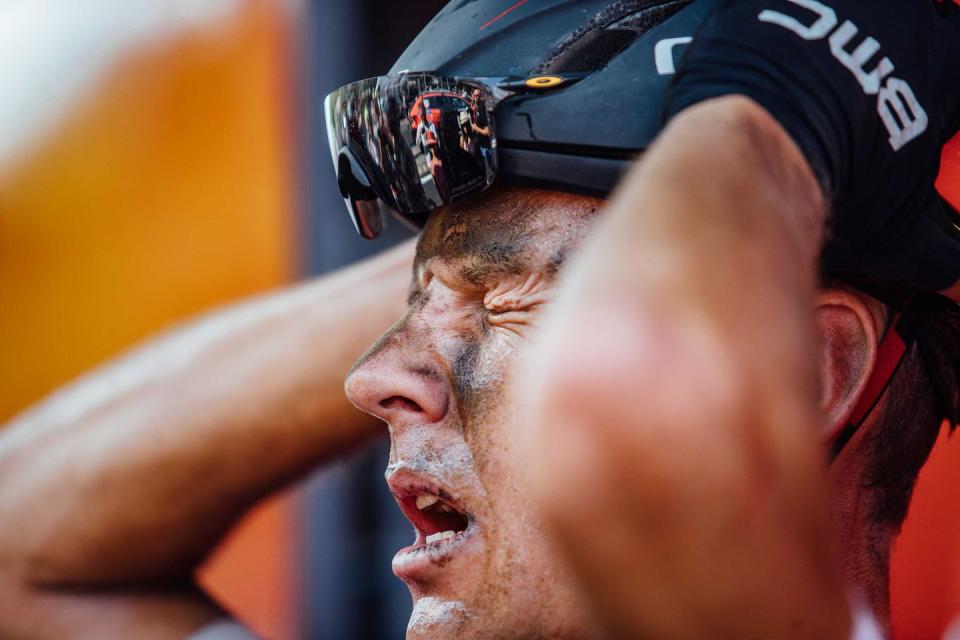
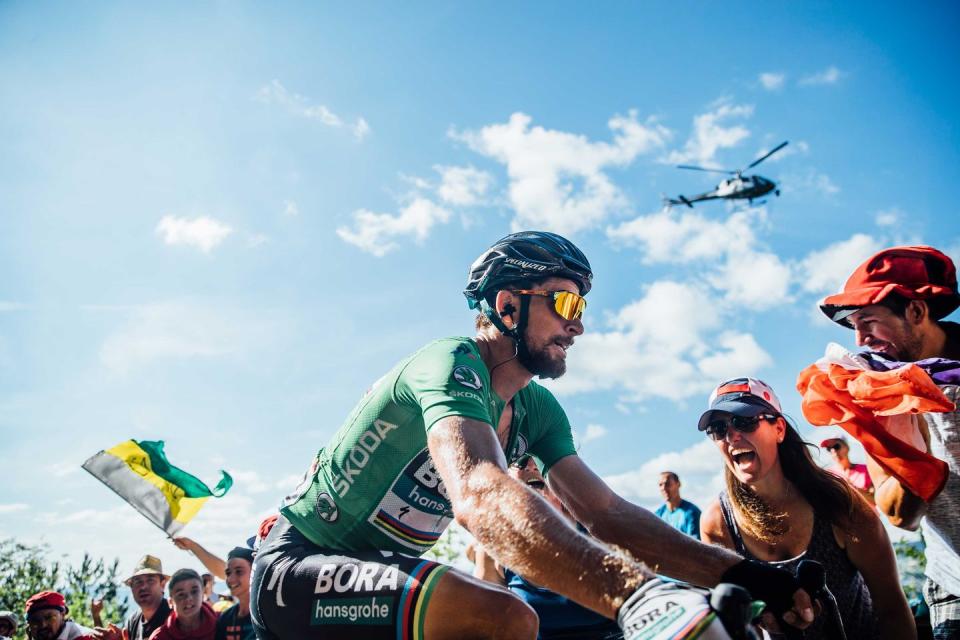
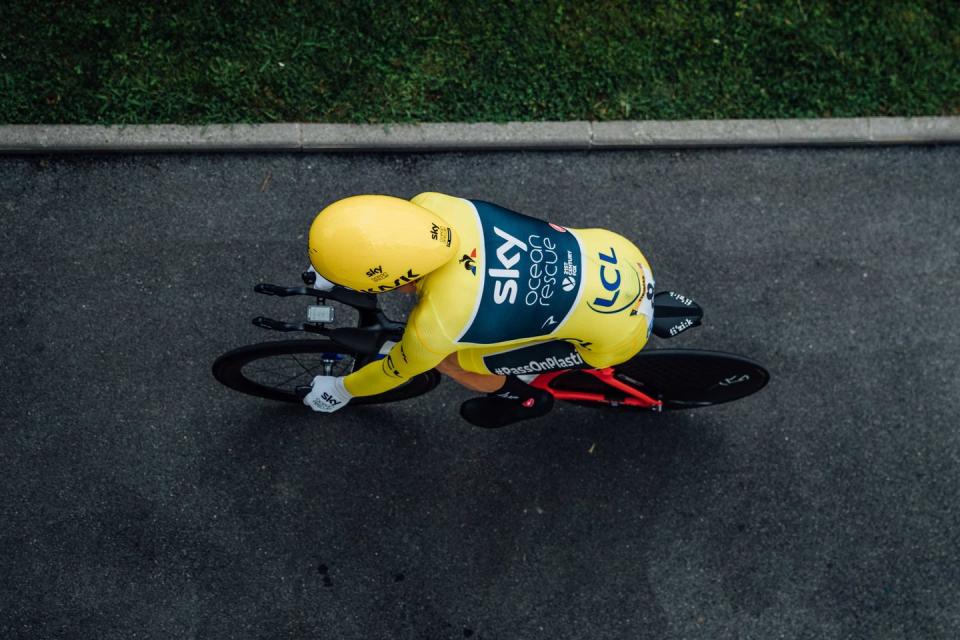
Can you take me through a typical day as specifically of what it looks like from start to finish?
Normally we stay as close as possible to the start town of the next day’s stage. On average a 30 to 40 minute drive. We like to arrive around 90 minutes before the race starts. This gives us time to grab a coffee with colleagues in the hospitality area and discuss the plans for the day.
We compare how many stops we are thinking about and possible locations. Once the riders begin to sign on, we head to the podium or buses to shoot. Around 15 minutes before the start of the race, we head to the car and drive onto the race route, heading towards our first stop. We park up and wait for the race. Once the peloton has passed and we’ve taken our shots we move to the next location using parallel roads to jump ahead. We normally repeat this around three times, and then it’s off to the finish to capture the winner and podium presentations.
Once that’s all done, we head to the press room at the finish line with all the other photographer and journalists and start to edit the shots from the day. This normally takes around two to three hours sending images to the clients we work for. Once the edit of the more urgent pics are done we drive to the hotel. Again, that’s normally another hour in the car, grab some food and then more work editing and adding metadata to pics, normally finishing around midnight to 1 a.m., then bed and repeat for 21 days.
What’s the hardest thing to shoot?
The photography is the easy bit, getting to the right place at the right time is the most difficult. So many factors can ruin the best laid plans. Traffic is our main problem. A badly parked car or being refused access to the course at a road block can really mess up your plans.
How do you know where to be and when? Are you shooting from the van?
We don’t shoot from the van. We have a sticker to drive on the parkour, but this only gives us access before or after the race. We have to find specific vantage points along the course and then jump ahead using shortcuts. Stopping points are normally decided by how easy they are to get in front. If we see the race three times on a stage that’s pretty good.
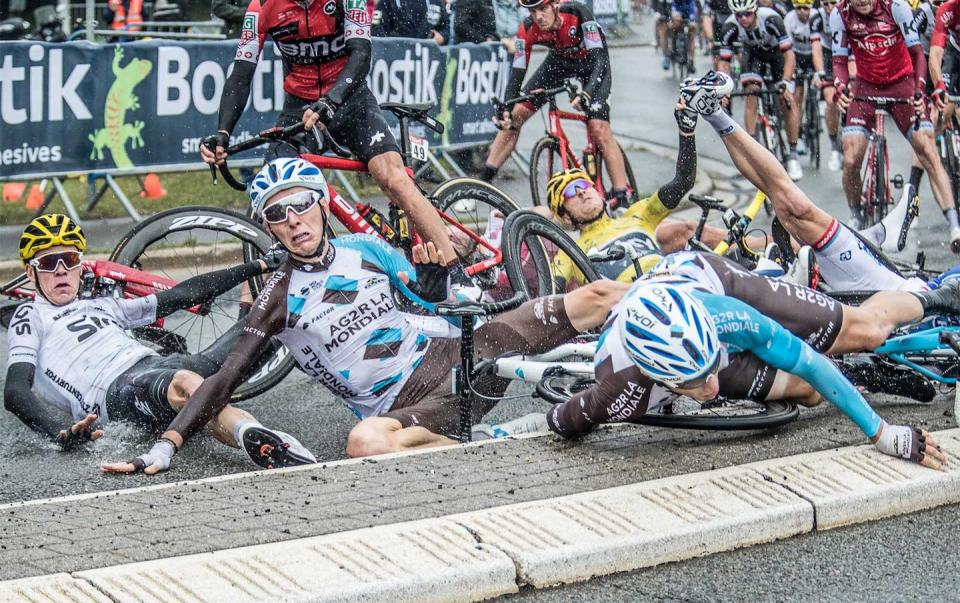
Speaking of knowing where to be and when, tell us about the iconic crash photo! Not only were you able to get an iconic image, but it also was widely seen.
My infamous crash shot was pure luck, right place right time. Not only did it become an iconic picture it also put me on the map as a cycling photographer, which I’m very grateful for. I owe that image a lot, as without it I wouldn’t have achieved what I have so quickly. My most memorable moment is obviously the iconic shot of the crash. And there are funny moments everyday which normally revolve around other colleagues’ misfortune.
For as many amazing shots, how about shots that didn’t work or you didn’t get?
Everyday we miss great shots, driving past epic landscapes and enthusiastic crowds. It’s got to be the most frustrating job in the world, but unfortunately, we are dictated by where we can stop and the layout of the roads. Often the most eagerly anticipated stages don’t deliver. The most memorable are when the weather has played a part. On this years Giro, the Mortirolo promised so much and delivered so little due to horrendous weather coming in. Last year’s Vuelta, thick fog descended on a climb when the riders approached, covering the stunning vista that lay beyond.
Shooting sports or events is stressful. How do you manage stress?
Lots of beer. I travel with a couple of other photographers. We all have good days and bad, and I think we get each other through by relentlessly ridiculing each other’s abilities. If you don’t have a very thick skin this job isn’t for you.
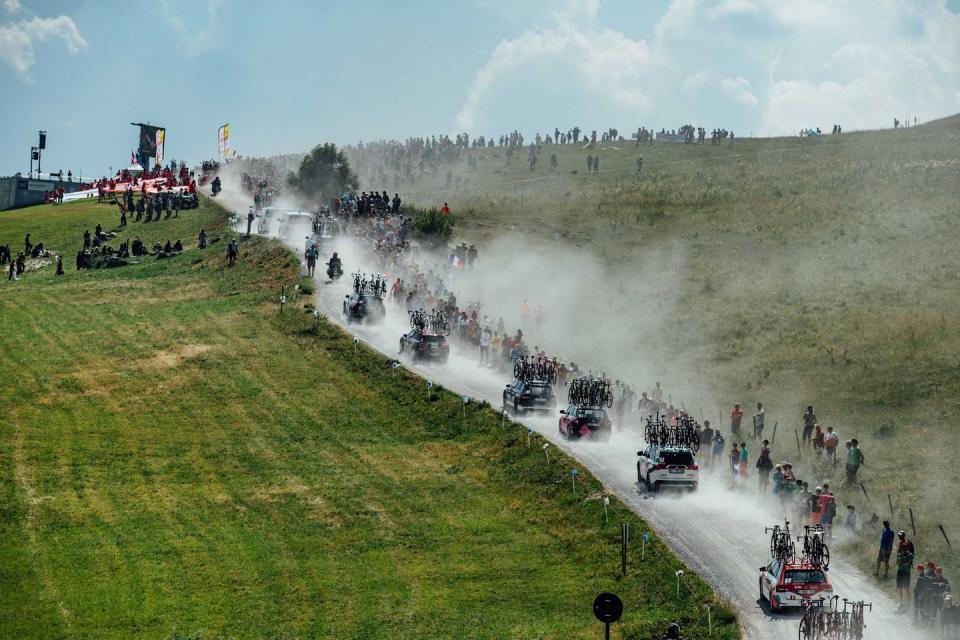
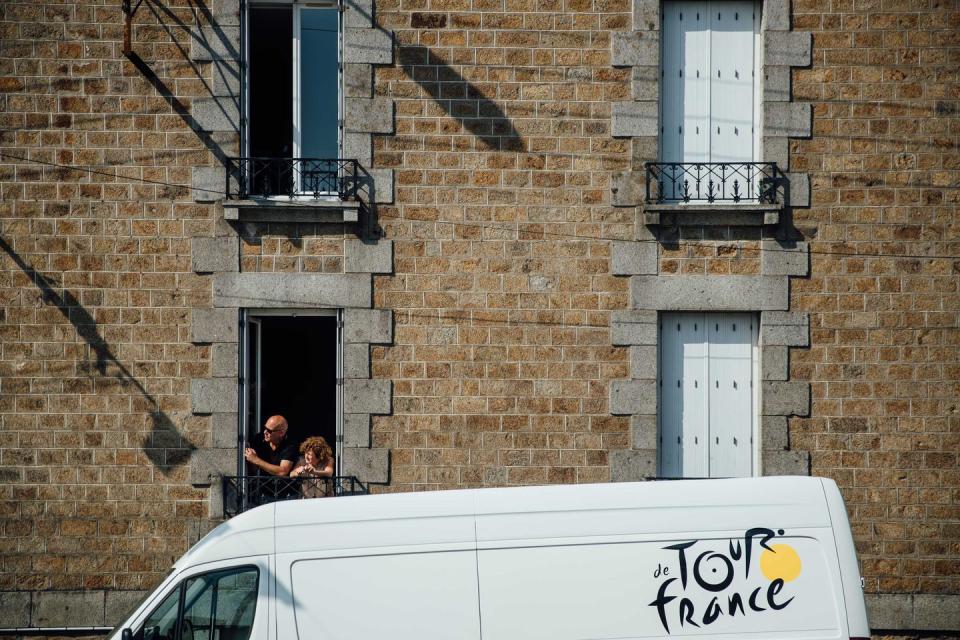
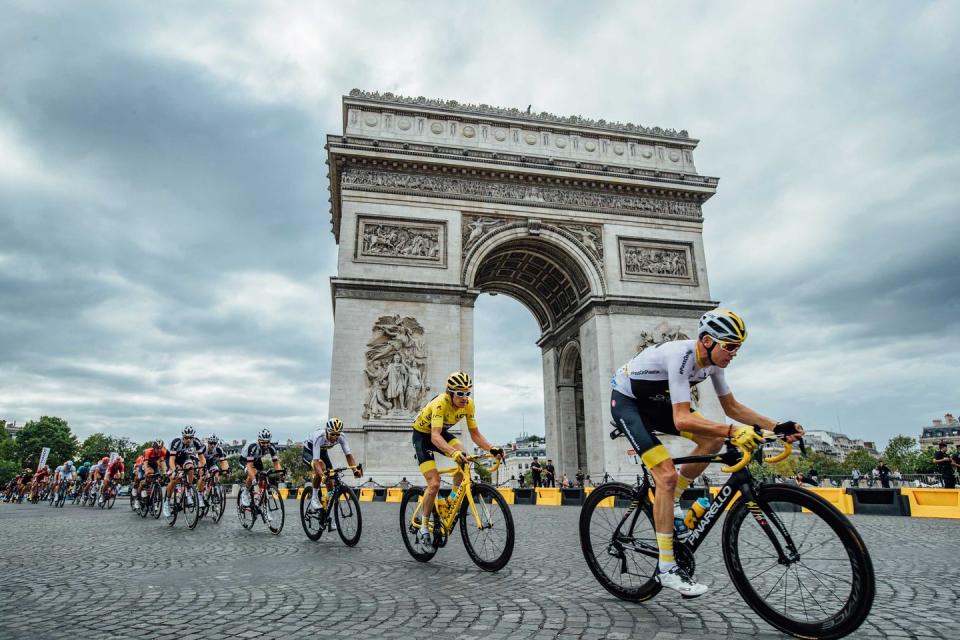
Do you ever have time to ride bikes?
Yes, I ride a bike. I have it with me in my van. If you’re lucky enough to get a free hour, it’s good to clear the head. Right now, I have a Storck in the van, plus my colleague’s Cipolini and Brompton, so please don’t break into it. At home I have my winter bike, which is a Merida CX with mudguards.
You travel in a van with other photographers? Did you all know each other before that?
Yes, we all know each other. The photographers that work on the World Tour are a tight knit bunch and we help each other out as much as possible, sharing transport, accommodation or equipment if anyone is unfortunate enough to break something or have it stolen.
What’s the rapport like in the van? Aren’t you all in competition with each other?
We all get on very well, we have our own clients, so their is no competition. We often pool images if someone has missed something, so quite often images tagged with a certain photographers name weren’t actually taken by them. It’s very common practice in the business, one photographer has multiple other photographers covering different angles.
How do you handle hotels, food, snacks, bathroom stops?
We use an app called Split Wise to share the expenses. Quite often one of us will book accommodation, the other does the driving, and someone else does the navigating and food. As for the bathroom, its normally by the side of the road, like pretty much everyone else in the race. Public toilets in rural France are few and far between.
Who do you think will be wearing the final yellow jersey?
After Stage 6 at La Planche des Belle Filles, my money is on Geraint.
Follow Chris Auld on Instagram and more coverage of the Tour de France on Bicycling.com.
You Might Also Like

